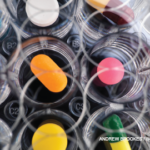 Research suggests that the diagnosis and classification of axial spondyloarthritis (axSpA) via magnetic resonance imaging (MRI) may be hindered when patients are taking non-steroidal anti-inflammatory drugs (NSAIDs). Data from this study were presented by Gareth T. Jones, PhD, of the Epidemiology Group, Aberdeen Centre for Arthritis and Musculoskeletal Health, University of Aberdeen, U.K., during the British Society for Rheumatology Annual Conference, April 24–26.1
Research suggests that the diagnosis and classification of axial spondyloarthritis (axSpA) via magnetic resonance imaging (MRI) may be hindered when patients are taking non-steroidal anti-inflammatory drugs (NSAIDs). Data from this study were presented by Gareth T. Jones, PhD, of the Epidemiology Group, Aberdeen Centre for Arthritis and Musculoskeletal Health, University of Aberdeen, U.K., during the British Society for Rheumatology Annual Conference, April 24–26.1
Background
MRI is frequently used to diagnose and classify axSpA with imaging evidence of active sacroiliitis (i.e., sacroiliac joint bone marrow edema). NSAIDs are first-line medications used to relieve and treat persistent symptoms of axSpA. Although NSAIDs are often prescribed by primary care physicians, many NSAIDs are available without a prescription. Thus, when patients first see a rheumatologist, they may already be taking an NSAID.2
Jones et al. hypothesized that such NSAID use may lead to an underestimation of sacroiliac joint bone marrow edema and mask the actual amount of joint inflammation present in patients with axSpA. They investigated the effects of NSAIDs on MRI exams in this patient population.
Methods
Adult patients with axSpA were enrolled from National Health Service rheumatology clinics. Patients were asked to discontinue their use of NSAIDs for one to two weeks before undergoing a sacroiliac joint MRI (scan 1). All study participants were then asked to restart their NSAID treatment.
Patients with bone marrow edema on scan 1 underwent a second scan six weeks after restarting their NSAID treatment. In the study, bone marrow edema lesions were defined according to the Assessment of SpondyloArthritis International Society (ASAS) criteria.
All scans were independently read by two different individuals and adjudicated by a third individual, if needed. All scan readers were blinded to the patients’ clinical characteristics and time point in the study. The researchers sought to determine the proportion of participants who had a no (or reduced) inflammation indicated on a second scan when they were taking NSAIDs vs. inflammation on a first scan when they were not taking NSAIDs.
Results
The researchers recruited 311 patients from 34 medical centers. Patient baseline characteristics included a median age of 42 years (mean interquartile range: 32–52 years). Sixty-two percent of patients were men (n=194), and 87% were white (n=271). The median symptom duration was nine years (mean interquartile range: 4–20 years), and the median time since diagnosis was one year (mean interquartile range: 0–7 years). The median Bath Ankylosing Spondylitis Disease Activity Index (BASDAI) was 4.5 (mean interquartile range: 2.8–6.2), the median Bath Ankylosing Spondylitis Functional Index (BASFI) was 3.1 (mean interquartile range: 1.5–5.6), and an elevated C-reactive protein of greater than 4 mg/dL was found in 46% of patients (n=143).
In all, 296 patients (95%) completed the NSAID washout and had scan 1. After the washout period, 50% of patients (n=135) reported an increase in spine pain at a median of two points on a numerical rating scale of 0–10 (interquartile range: 1–3), and 61% of patients (n=166) had worsening of disease activity, with a median BASDAI increase of 0.9 (interquartile range: 0.5–1.6).
After scan 1, 50% of patients (n=149) had bone marrow edema lesions. Of these patients, 131 (88%) participated in scan 2. Of the 131 patients who completed scan 2, 31 patients had no bone marrow edema lesions (24%; 95% confidence interval: 17–32%).
Conclusion
The study results suggest NSAIDs may affect bone marrow edema when sacroiliitis is also present. When NSAIDs were being taken by patients, an approximate 25% reduction in lesions was found.
Additionally, when NSAIDs are consumed, axSpA diagnosis and classification may be hindered. To determine a more accurate axSpA diagnosis, use of an NSAID washout period may be prudent prior to the MRI imaging, if the patient agrees.
This study is useful in garnering a more accurate diagnosis in this patient population.
Michele B. Kaufman, PharmD, BCGP, is a freelance medical writer based in New York City and a pharmacist at New York Presbyterian Lower Manhattan Hospital.
References
- Jones GT, Bennett AN, Sengupta R, et al. Non-steroidal anti-inflammatory drugs reduce sacroiliac joint inflammation in axial spondyloarthritis (abs OA14). Oral presentation, British Society for Rheumatology Annual Conference. 2023 Apr 23.
- Diseases and conditions: Spondyloarthritis. American College of Rheumatology. 2023.

